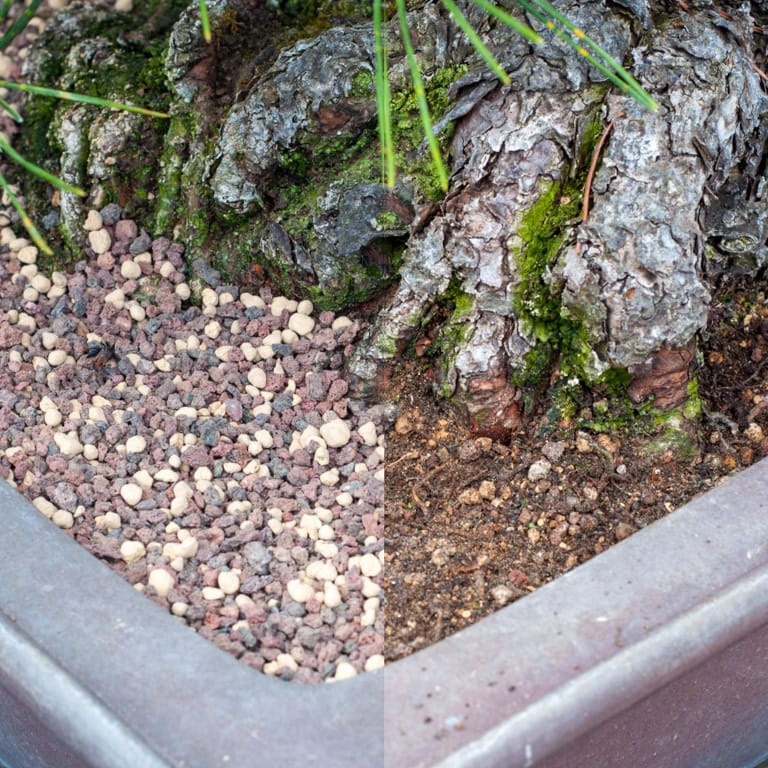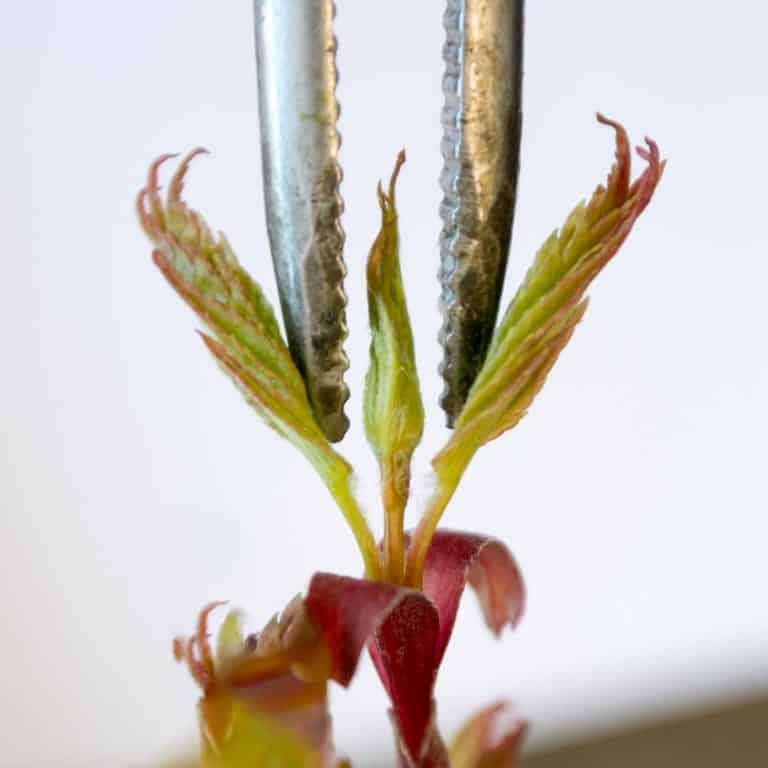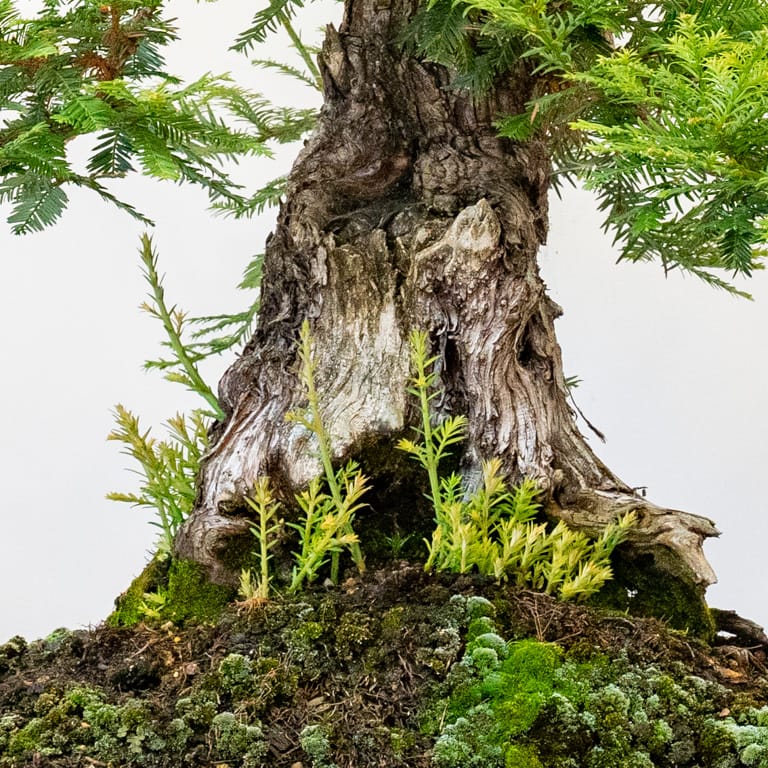If you ask me what my favorite time of year in the garden is, I’ll say early spring, right after repotting. It’s the one time of year when everything looks good and there’s little work to do.
Or so I used to think. In recent years, I’ve found that spring is a busy time for maintenance tasks and a key season for setting up trees for success over the remainder of the growing season. Here are some of the tasks that require attention as trees start growing in spring.
Replace top dressing – Surface soil can break down, collect weeds, and become crusted with broken down fertilizer over the course of the growing season. For trees that aren’t repotted, replace the top 1/2″ or so of old soil with fresh soil (and moss, if needed) to facilitate watering.

Pinching – For mature specimens where the goal is to improve branch density, pinching begins as soon as trees start growing in spring on species like Japanese maple and Japanese beech. Pinch new shoots on vigorous areas of the tree (often the upper branches) and let weaker areas (like the interior shoots) gain vigor.

Removing flowers and fruit – For species that produce fruit or seed pods after blooming, remove any flowers when they start to fade (or fruit if you don’t remove the flowers in time). Chojubai, wisteria, and plums commonly produce fruit or seed pods if the flowers aren’t removed quickly so checking these trees frequently through the blooming season can help you prevent fruit from forming.
Removing suckers – Some species (like chojubai or coast redwood) produce shoots from the roots when the start growing in spring. Remove unneeded suckers as soon as they appear.

Fertilizing – Young trees, species that will be decandled (like black or red pine), and species like plums appreciate receiving additional resources early in the season. Fertilize evergreen bonsai when they start growing in spring (or earlier if temperatures are mild). Wait a few weeks after repotting for trees you need to repot.
Catching up on fall work – If you haven’t finished pruning, plucking, and wiring everything in the garden, now’s a good time to do it. Hold off when there’s enough new growth that it would be difficult to do the work without damaging new shoots.
Depending on your weather and the species you work with there may be many more tasks to do in your garden as trees wake up from dormancy. Let us know in the comments below what else you do in the garden when your trees wake up from dormancy.
Related, throughout the year I receive a number of requests from readers to include information from posts in club newsletters. This is perfectly OK for new posts or old posts as long as you provide attribution (by Jonas Dupuich, Bonsai Tonight) and link to the original article. And if there are any specific topics you’d like for me to address, don’t hesitate to let me know and I’ll see what I can do to help!
News & Updates
- There are six weeks left to submit your trees to the second Pacific Bonsai Expo! (The deadline for submitting is April 30.) Learn more about the Call for Entries.
- The Bonsai Central event in Collinsville, Illinois, is coming up soon. The convention is scheduled for May 3-5, 2024, at the Gateway Convention Center near St. Louis. You can register, check out the awesome workshop material, and learn more about the event at bonsai-central.com.
Subscribe to Bonsai Tonight
New Posts Delivered Every Tuesday and Friday
Alessandro says
Hi Jonas! Do you pinch the new shoots in bonsai that you have just repotted or for that year you keep your scissors away from the buds?
Thanks!!!
Jonas says
Yes, on vigorous species like Japanese maple, I pinch whether or not I have repotted that year. Thanks, Alessandro!
scott chadd says
the initial growth usually produces a sepel or some other part of the foliage that is placed there to protect the next growth which is groing to be a true leaf. i wait until the i see that true leaf and then pluck out the distal bud. there is normally a nascent bud at the base of the leaf. when the stem is not allowed to extend (removing the bud stops extension) those buds often develop and produce a new twig. thus the 2, 4, 8, 16 pattern of twig replication and the creation of smaller leaves.
Jeff Rose says
Hi Jonas,
My Dad and I attended your black pine workshop last year here in Southern California and are looking forward to seeing you again in June. We REALLY enjoyed meeting you.
One thing I wanted to mention is how great your how-to-guides are. They are excellent. The “Decandling black pine bonsai: an in-depth guide” is the most comprehensive, easy to understand guide I have seen (this can be a very hard concept for beginners such as myself to grasp).
I would suggest adding a specific link at the top of the page as they can be easy to miss (you need to hover your cursor over the “Blog” link to see the how-to-guides link.
THANKS for the great resources Jonas. I hope you are well.
Jonas Dupuich says
Thanks, Jeff – I really appreciate it! And thanks for the suggestion about the guides. I have some changes lined up for the site and will see about making these more visible. Thanks!